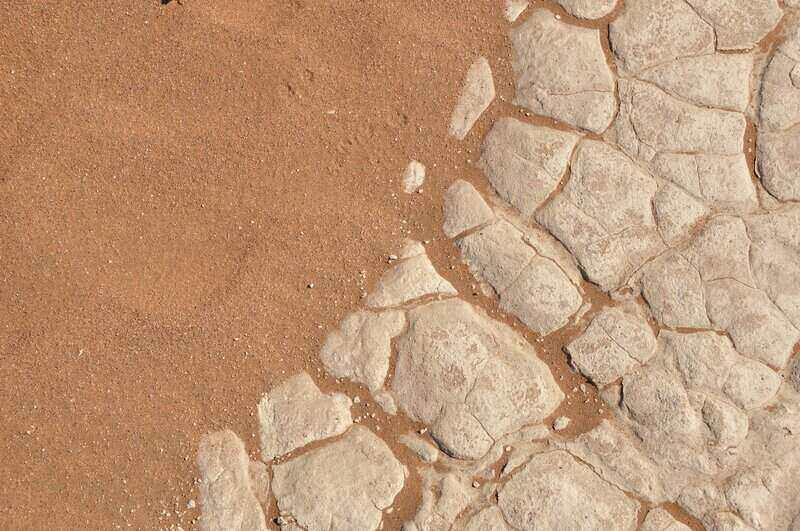The success of your garden and even the grass on your lawn starts below the surface with your soil. There are six basic soil types, each with its own advantages and disadvantages. What this means: If you have the wrong dirt for your plants, you can really soil your garden.
This soil types guide will tell you a little bit about each kind of soil, along with how to identify yours and which plants grow best in each.
This soils guide covers6 Basic Soil Types 1. Sandy Soil 2. Silty Soil 3. Clay Soil4. Loamy Soil 5. Peat Soil 6. Chalky Soil How to Identify Your Soil Type Professional Soil Test DIY Ribbon Test DIY Settle Test FAQ About Soil Types Improve Your Soil for a Healthier Lawn and Garden
6 Basic Soil Types
Soils are divided into six types based on the soil structure or texture. All soils are made of some combination of organic matter and rock particles. The size of the particles is what makes the different soil textures.
The following are the six basic soil textures, but the soil in your yard probably isn’t 100% one or the other. Most soils are a combination of two or more different textures. You might have sandy clay, clay loam, sandy silt, or any other combination soil type.
1. Sandy Soil
Sandy soils have large, coarse rock particles and a loose structure. Sandy soils feel gritty when you rubbed between your fingers. Because there’s so much space for air between the large soil particles, water and nutrients can move quickly and easily through these soils.
ProsCons✓ Drains well ✓ Good aeration ✓ Easy to dig and cultivate ✓ Quick to warm up in spring, so plants start growing earlier✗ Can’t retain essential plant nutrients ✗ Dries out very quickly, especially in summer ✗ Tends to be a more acidic soil than the ideal range for most plants ✗ Quick to cool down in fall, so annual plants die earlier
Best plants for sandy soils:
SucculentsPalms Yuccas Salvias Butterfly weed
2. Silty Soil
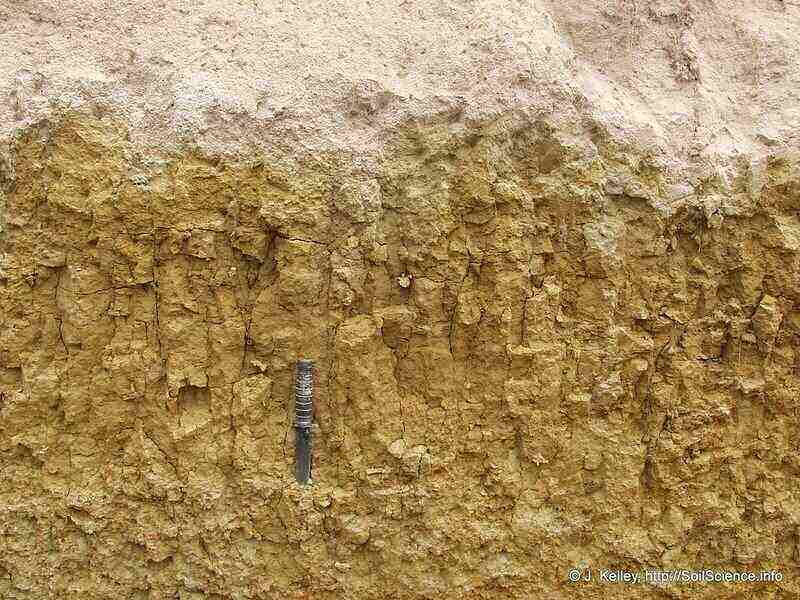 Soil Science / Flickr / CC BY 2.0
Soil Science / Flickr / CC BY 2.0
Silt particles are medium-sized, somewhere between coarse sand and fine clay. Silt soils have a soft and slippery texture that might remind you of soap. You’ll usually find this type of soil near rivers, lakes, ponds, and similar natural bodies of water.
ProsCons✓ Good balance between retaining moisture and draining well ✓ Rich in nutrients for plants✓ Soft and easy to cultivate✗ Prone to erosion ✗ Becomes compacted easily
Best plants for silty soils:
Hardy geraniumsRosesButterfly bush Daffodils Hostas
3. Clay Soil
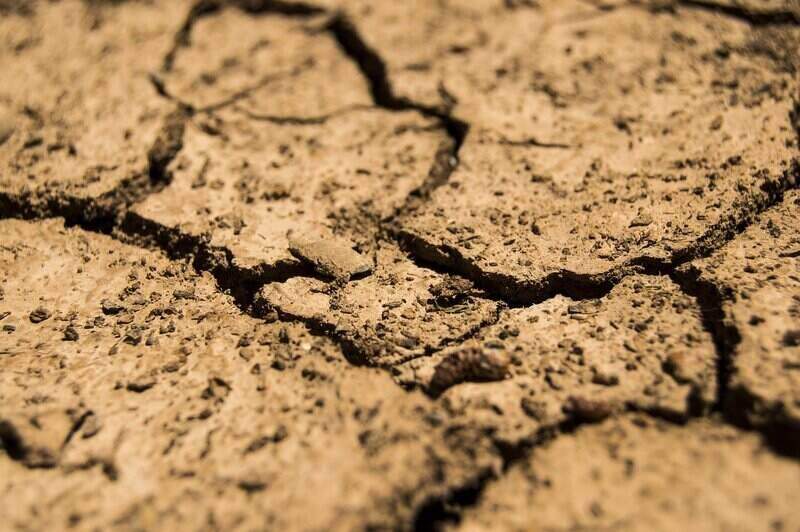 daeron / Pixabay
daeron / Pixabay
Fine clay particles make for a heavy, sticky soil structure with few air spaces between particles. Think of clay soil as pretty much the same thing as the clay you would use to make art. Just like clay artworks become hard when they’re fired in a kiln, clay soil becomes rock hard if it’s allowed to dry out completely under the hot sun.
ProsCons✓ Holds onto lots of plant nutrients✓ Retains water for a long time✗ Poor drainage✗ Becomes compacted very easily so that water and nutrients can’t reach plant roots✗ Gets hard and cracks when it dries out ✗ Heavy and difficult to cultivate
Best plants for clay soils:
Canna lilies Bee balm Hibiscus Ferns Cardinal flowers
4. Loamy Soil
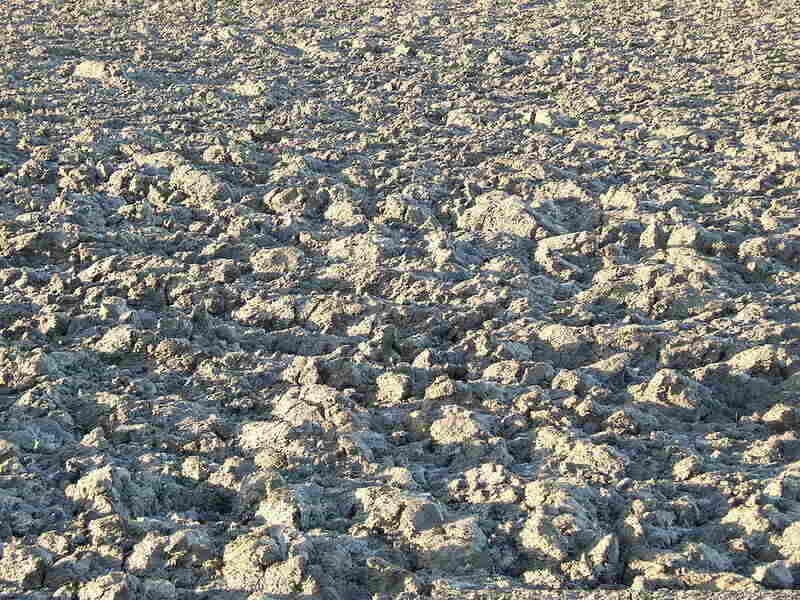 Peter Van den Bossche / Wikimedia Commons / CC BY-SA 2.0
Peter Van den Bossche / Wikimedia Commons / CC BY-SA 2.0
Loamy soil, also known simply as loam, is the ideal soil type. Loamy soil is a balanced mix of sand, silt, and clay particles that combines all their strengths. Loam is typically dark brown, almost black, and feels damp to the touch.
ProsCons✓ Holds moisture and nutrients✓ Good drainage✓ Warms up quickly in spring, so plants start growing earlier ✓ Easy to cultivate ✗ Somewhat susceptible to erosion
Best plants for loamy soils:
Most plants will grow well in loam, which is the best soil type overall. Here are a few examples of plants that prefer it to other soil types:
WisteriaLarkspursAmerican beautyberryHydrangeasMost fruits and vegetables
5. Peat Soil
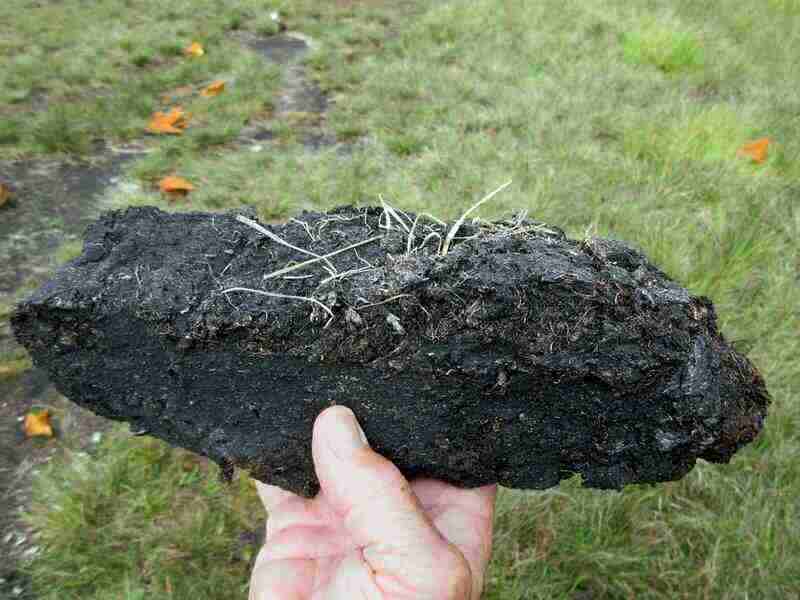 David Stanley / Wikimedia Commons / CC BY 2.0
David Stanley / Wikimedia Commons / CC BY 2.0
Peat soil isn’t common in home gardens. It’s made primarily of peat, which is organic matter that comes from decayed moss. You should only find peat soil near peat bogs or wetland areas. Peat soil feels spongy to the touch.
ProsCons✓ Rich in organic matter ✓ Retains a large amount of water for a long time✗ Doesn’t drain well ✗ Poor in plant nutrients ✗ Too acidic for many plants
Best plants for peat soils:
AzaleasCamellias BlueberriesMagnoliasCaladiums
6. Chalky Soil
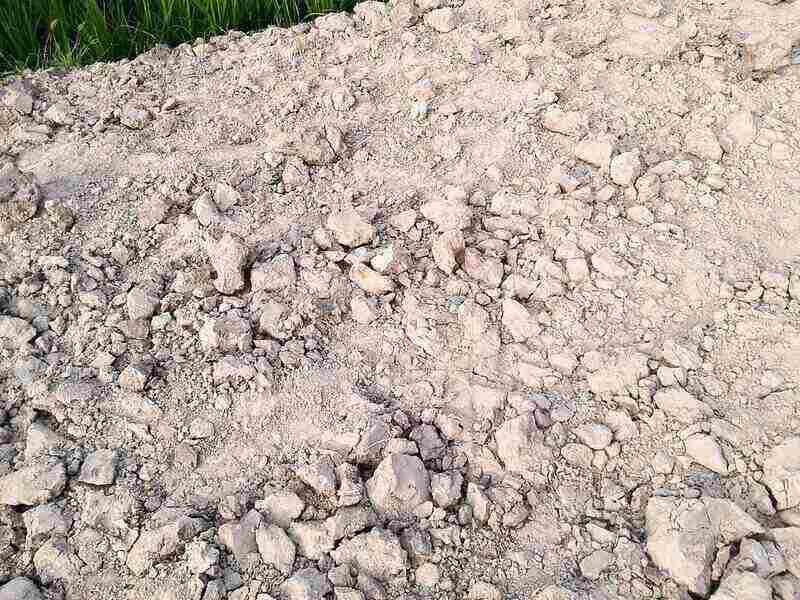 ©Vespertunes / Wikimedia Commons / CC BY-SA 4.0
©Vespertunes / Wikimedia Commons / CC BY-SA 4.0
Chalky soil is found on top of limestone deposits deep beneath the Earth’s surface. Therefore, chalky soil is found only in certain areas and isn’t common. All chalky soils contain a lot of limestone, which makes them highly alkaline. Chalky soils have a stony texture and sometimes contain large, white lumps.
ProsCons✓ Good drainage ✗ Doesn’t retain moisture or plant nutrients ✗ Highly alkaline soil is bad for many plants ✗ Breaks down soil amendments such as compost very quickly, so they may not do any good
Best plants for chalky soils:
Ceanothus Bellflowers Clematis Dianthus Lavender
How to Identify Your Soil Type
If you can’t identify your soil based on how it looks and feels alone, there are some tests that can help you figure it out.
Note: Soil can vary in spots even a few feet apart. Always test the soil in the specific site you’re preparing for plants. Don’t assume the results of one test represent your whole property.
Professional Soil Test
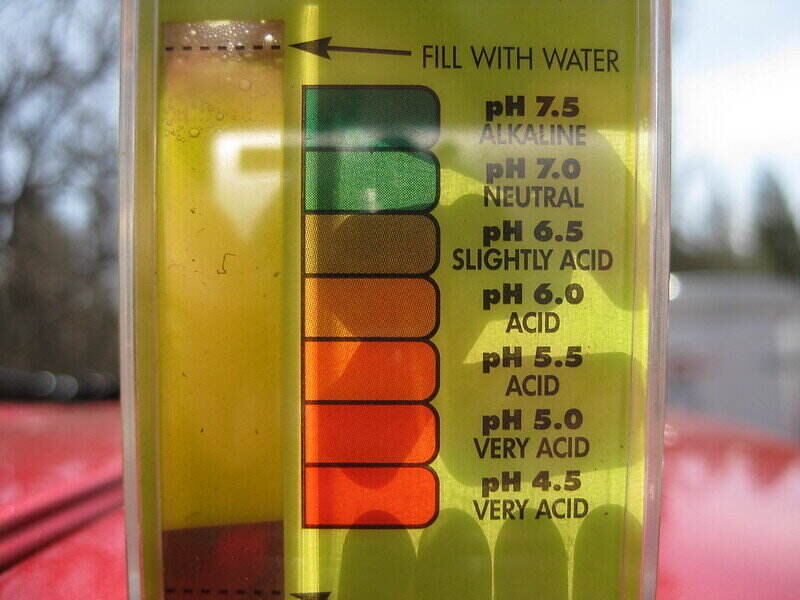 Ryo Chijiiwa / Flickr / CC BY 2.0
Ryo Chijiiwa / Flickr / CC BY 2.0
The best option is to take a soil sample and send it to a lab for a professional soil test. A professional soil test will not only tell you about your soil type. It also includes an analysis of your soil’s pH and the plant nutrients it contains, both of which are important for figuring out what help your soil needs and which plants you should grow.
Most professional soil tests will even tell you exactly what you can add to your soil to improve it, so you won’t have to figure out that part on your own.
You can usually get a soil test from your local university extension. For more information, find your extension using the National Institute of Food and Agriculture’s university directory.
DIY Ribbon Test
One simple soil identification test you can do from home is called the ribbon test. It will give you a good idea of your soil type/texture, but it won’t tell you about your soil’s other important characteristics, such as soil pH level and nutrient content.
Essentially, the point of the ribbon test is to see how well your soil holds together. Start by making a ball of moist soil about 1/2 – 3/4 inch in diameter. Hold the ball between your thumb and forefinger and squeeze it into a flat “ribbon” shape. Continue squeezing, causing the ribbon to grow longer and longer, until the soil breaks off.
This video from the University of Nebraska-Lincoln shows how to conduct your own soil ribbon test:
Once you have your soil ribbon, measure how long it is. The length of the soil ribbon will give you a good idea of what type of soil you have (check the chart below for details).
Ribbon lengthSoil typeNo ribbonSandy soilLess than 1 inchLoam, sandy loam, or silty soil1 – 2 inchesClay loam, sandy clay loam, or silty clay loam soil Greater than 2 inchesClay, sandy clay, or silty clay soil
DIY Settle Test
The settle test is another DIY method for identifying your soil type. It shows how your soil’s particles settle in water.
To perform a settle test, take a handful of your soil and put it in any transparent container (Tupperware, Mason jar, anything will do). Pour water over the soil, leaving enough empty space in the container that you can shake up its contents. Shake well and leave it alone for at least 12 hours.
When you check on the container after 12 hours, the soil particles will have settled, and how they settled is a clue to your soil type. See the chart below to interpret your results.
What you see in the containerSoil typeWater is mostly clear, and all the soil has collected at the bottom of the containerSandy soil Water is murky, and some of the soil forms a layer at the bottom of the container Clay soil, silty soil, or a combination of the twoWater is mostly clear, and you can see separate layers of different-sized particles at the bottom of the container Loam, clay loam, sandy loam, or another loam variation Water is murky, many particles float on the water’s surface, and some soil has sunk to the bottom of the container Peat soil Water is a pale gray color with white, gritty pieces in it Chalky soil
This video from Urban Self Sufficiency explains the settle test a little more in-depth and gives you some examples of what you’re looking for:
FAQ About Soil Types
1. How many types of soil are there?
No two sites have the exact same soil composition, so really there are infinite soil types. Every soil is a combination of the six basic textures described in this article, and the possible combinations are endless. You could call your soil “sandy soil” if it contains a majority of sand particles or “clay soil” if it contains mostly clay, and so on.
2. What is topsoil?
Topsoil is exactly what it sounds like: the topmost layer of the soil. The topsoil layer extends anywhere from 2 to 12 inches below the surface. This is the most important soil layer for gardening. It’s where your plants’ roots grow, where plant nutrients are found, and where beneficial microorganisms such as earthworms and bacteria live.
3. What is a soil layer?
Soil layers, also known as soil horizons, are the different sections of soil as it extends from the surface (the topsoil) down into the Earth. Each layer has a designated letter and name to identify it. These are the soil layers in order, from top to bottom: — O horizon: Humus, a thin layer of decomposing organic materials (such as fallen leaves) that may or may not be present on top of the soil. — A horizon: Topsoil, the layer of rock particles and organic matter that you work with when gardening. — E horizon: Eluviated layer, a layer that contains no clay or organic matter but only sand or silt particles, which is only found in some soils. — B horizon: Subsoil, a layer rich in minerals, where plant roots will extend if they’re allowed to grow and spread for a long time without being disturbed. — C horizon: Parent material, the original material which the soil developed from, such as granite, limestone, or quartzite. — R horizon: Bedrock, the mass of rock below the soil.
4. What is soil erosion?
Soil erosion is the process of natural forces (such as wind and rain) weathering away the topsoil. Erosion may happen gradually over time, in which case you probably won’t even notice it. When you have to worry is when erosion happens rapidly and carries all of your topsoil away, along with your soil’s fertility and ability to support plant life.
Improve Your Soil for a Healthier Lawn and Garden
Even if your soil test shows less than favorable results, don’t give up on having a landscape full of thriving greenery! You can work soil amendments into the ground to improve its overall fertility or make it more suitable for certain plants.
One common soil amendment is compost, which is decomposed organic material. Compost adds nutrients to your soil and improves its structure. It can lighten up heavy clay soil or boost sandy soil’s water holding capacity. Compost is the closest thing there is to a cure-all for your soil.
Other soil amendments can change your soil pH and add essential plant nutrients. Agricultural lime will raise your soil pH level, while sulfur will lower it. Fertilizers contain different mixes of plant nutrients to benefit different plants.
So, no matter how tricky your soil type is to work with, there’s hope. Find the right amendments to help your soil, and you can build your lawn and garden on a healthier foundation.
Even with healthy soil, your lawn still needs a lot of help to get by. LawnStarter’s local lawn care pros can cut the grass for you, so there’s one less thing on your to-do list.
Main Photo Credit: Jing / Pixabay
The post Guide to Soil Types: Pros, Cons, and Plant Suggestions appeared first on Lawnstarter.
Read more: lawnstarter.com

